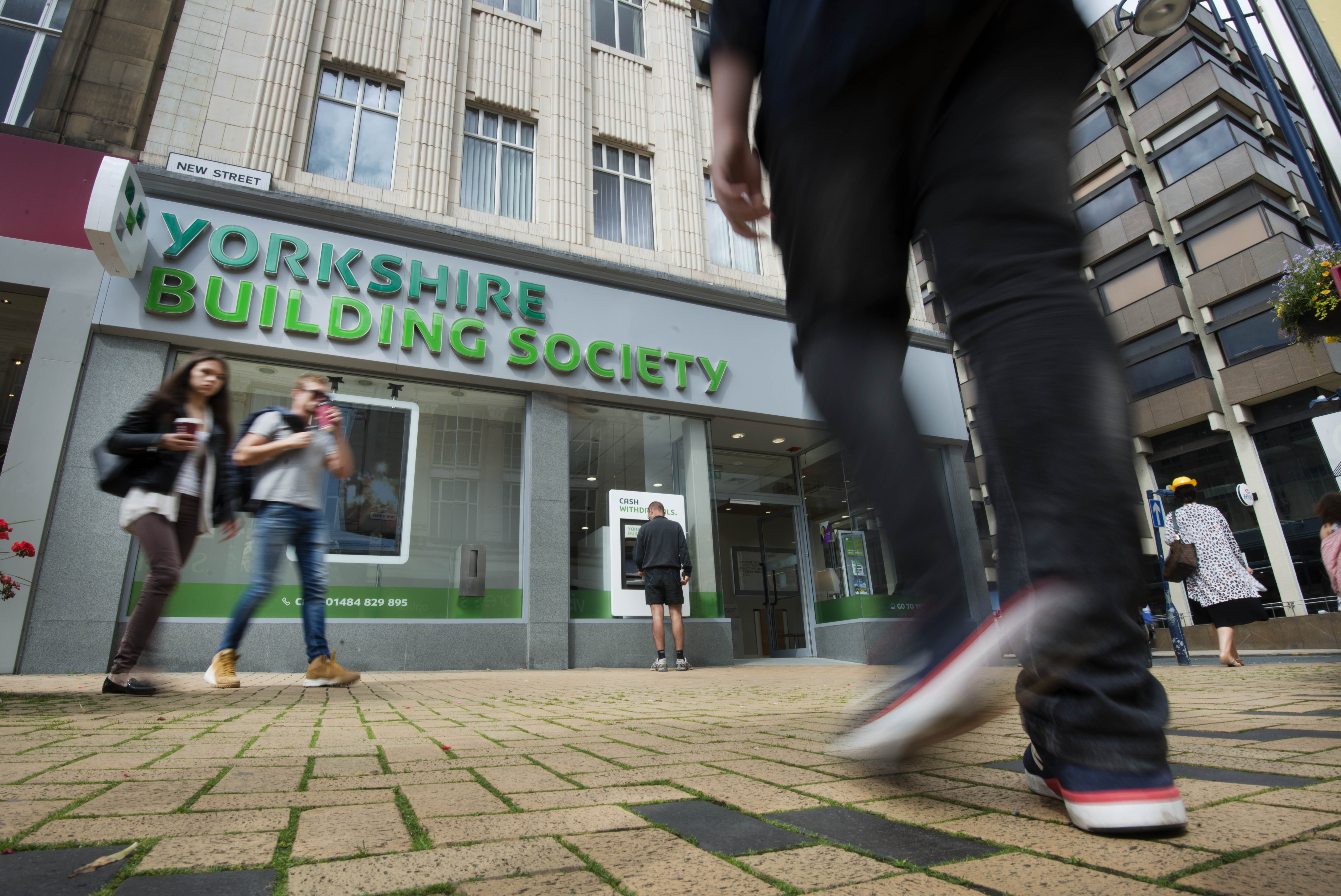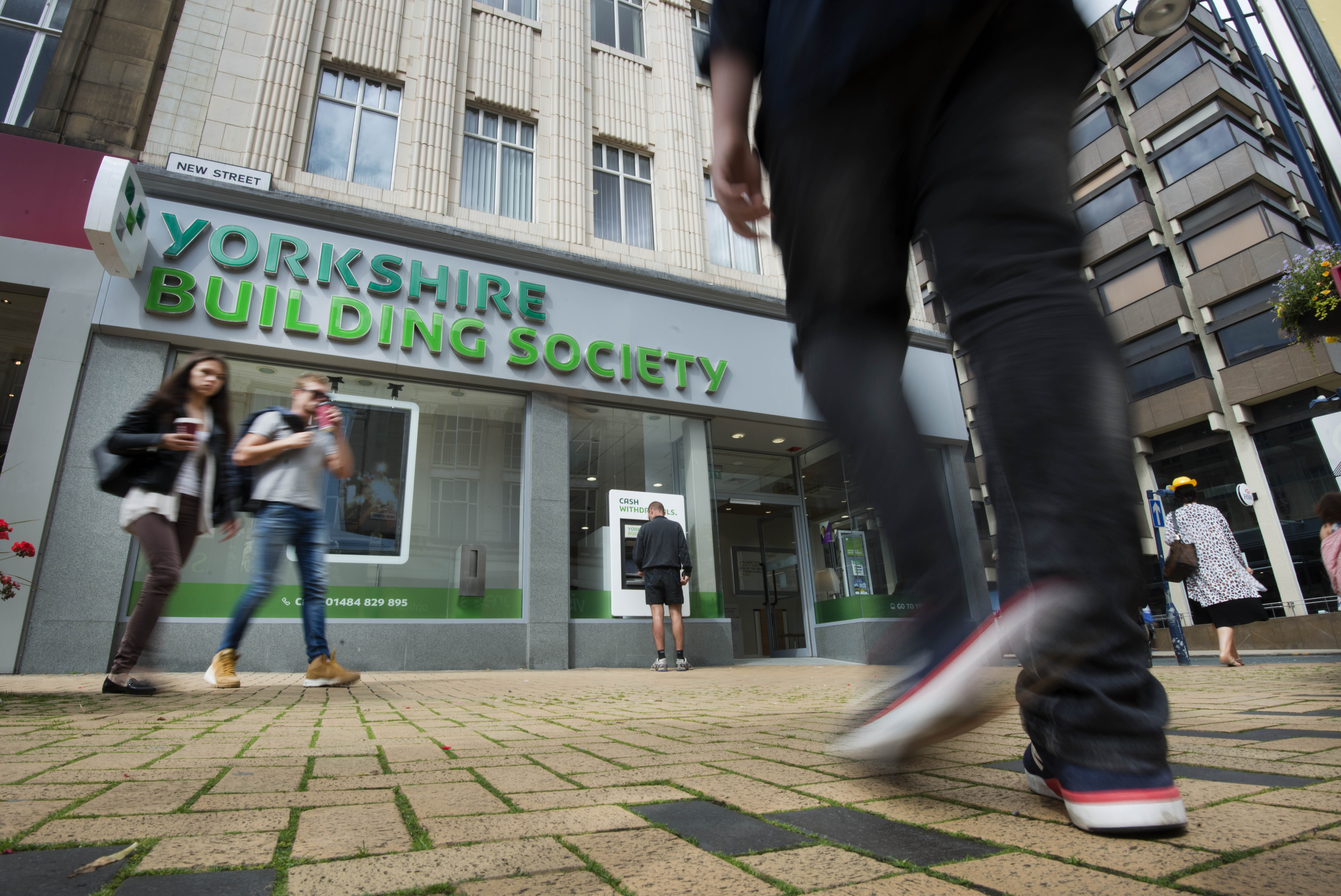Yorkshire Building Society announces 2020 results | YBS
Yorkshire Building Society announces 2020 results
Yorkshire Building Society has today announced (24 February 2021) its results for 2020, in which it details its financial performance and work to support customers, colleagues and communities.
Financial highlights:
- Profit before tax of £161.3m (2019: £167.2m) and core operating profit of £170.5m (2019: £184.6m).
- Provided 72,127 mortgages during the year, including a record 10,854 first-time buyer mortgages (2019: 7,789 first-time buyer mortgages).
- Mortgage balances increased by £800m to £38.8bn (31 December 2019: £38.0bn).
- Supported savers through interest rates which beat the market average by 0.17%, equating to £51m in additional interest.[1] The Society recently announced it was increasing savings rates, proving an additional £20m in interest to savers.
- Saving balances increased by £2.7bn to £33.4bn (31 December 2019: £30.7bn).
- Common Equity Tier 1 ratio at 16.7% (31 December 2019: 16.6%).
The full financial results are included in the appendix below.
Mike Regnier, Chief Executive of Yorkshire Building Society, said:
Despite the economic challenges and uncertainties, I’m pleased to report Yorkshire Building Society delivered a strong set of 2020 results. Our statutory and core profits remain healthy, with plenty of capital and liquidity to weather the external environment and enable us to continue to support our customers. We have continued to simplify our business and have, once again, reduced our overall cost base while still growing the Society in terms of both mortgage and savings balances.
These results would not have been possible without the hard work, dedication and resilience of our colleagues. In what has been an incredibly worrying and difficult year for everyone, both personally and professionally, they have supported our customers and each other. I’m incredibly grateful to each and every one of them.
As an organisation which aims to deliver real help and value to its customers, we were very pleased to help a record number of first-time buyers in 2020. We’ll continue to support those buying homes in 2021.
2020 was clearly another tough year for savers, with the Bank of England rate dropping to a record low of 0.1%. To support saving and deliver value to our members, we ensured our rates were higher than the market average throughout 2020. We have recently announced an additional £20m in loyalty interest on our savings products for existing members through increased rates.
The pandemic has brought into sharp focus the challenges many people face around financial wellbeing, employment and skills. We have increased the work we are doing to support communities with greater investment and focus on our community programmes. At the end of 2020, we committed to enhance existing initiatives and establish new schemes to help people of all ages and stages of life with financial resilience. We’re proud to be advancing an agenda which will support people who find themselves in difficult circumstances with financial wellbeing, skills and employability, making a real difference to thousands of lives.
Supporting customers, colleagues and communities through the pandemic:
Throughout the pandemic, the Society has focused on supporting its customers and colleagues. It has prioritised keeping customers in their homes, ensuring their savings are safe, supporting first-time buyers, and looking after colleagues’ health and wellbeing.
The Society’s colleagues have stepped up to continue to support members, with the vast majority of branches and agencies remaining open throughout, contact centres remaining open and all staff able to work remotely transitioning to home-working.
Delivering high standards of customer service is critical at this time and the Society increased its Net Promoter Score in 2020 to +53 (31 December 2019: +51),[2] demonstrating its commitment to delivering on service when its members need it the most.
During 2020 the Society provided 39,331 mortgage payment deferrals to help those suffering an income shortfall as a result of the pandemic. The vast majority of those who received a mortgage payment deferral have now resumed their normal repayments.
The mutual is offering staff unlimited dependents and carers leave at full pay and anyone who is shielding, unwell or needs to self-isolate and cannot work from home qualifies for paid sick leave at their full salary. The mutual did not call on the government’s job retention scheme and was pleased to see colleague engagement rise materially to make YBS a top-quartile employer for engagement in our industry.
Diversity and inclusion are central to our strategy. As part of our Women in Finance Charter commitments, this includes a continued focus on increasing female representation in senior roles, which rose from 39% to 46% in 2020.
Mortgages
Throughout the year the Society provided a total of 72,127 mortgages, resulting in total mortgage balances increasing by £800m to £38.8bn, with gross lending at £7.1bn (31 December 2019: £7.9bn).
There was a reduction in the number of mortgages offered in the first half of the year, when the housing market was largely suspended, but we have seen significant levels of activity in the second half of the year and particularly following the Government’s change to Stamp Duty thresholds.
This, combined with other factors such as a rise in home working, drove an increase in demand in the house purchase market. Overall, the mortgage market recovered to end the year strongly, given the circumstances.
To support the housing market and help first-time buyers to become homeowners, the Society offered mortgages at 90% loan-to-value wherever service levels allowed, resulting in the Society financing a record 10,854 mortgages for people buying their first home. This was an increase of 29% compared to 2019.
Savings
With the Bank of England rate falling to an all-time low of 0.1%, 2020 was a difficult year for savers. As a mutual member value is a key part of the Society’s purpose.
The Society supported members in building financial resilience, opening 227,019 savings accounts in 2020. Total savings balances increased by £2.7bn to £33.4bn (December 2019: £30.7bn).
The Society’s savings rates beat the market average by 0.17% (31 December 2019: 0.34%),1 equating to £51m in additional interest for savers.
In January 2021, the Society increased interest rates on the majority of its off-sale variable rate savings accounts by 0.20%, benefitting more than 1.6 million members. This equates to an additional £20m in interest for savers.
In February, it launched a regular savings account with a highly competitive rate of 3.5% for members who have been saving with the Society for more than a year.
Community investment
The pandemic has demonstrated the challenges many are facing with financial wellbeing. In response to this, the Society has increased its support for communities, committing to strengthen existing initiatives and establish new schemes to help people of all ages and stages of life with financial resilience.
During the year, the Society continued to raise money for its charity partnership End Youth Homelessness and launched a second charity savings bond. The total raised for the charity during our three-and-a-half-year partnership was more than £1.1m and this helped 557 young people with 117 dependent children into a place to call home to date.
In 2021, the Society launched a new charity partnership with Age UK, which aims to raise £1m to deliver the Building Better Lives programme. The partnership will provide individual support to help prevent more than 4,700 older people reaching financial crisis point, whilst supporting up to 100,000 more with crucial advice around planning for significant life changes.
The Society will also enrich its award-winning Money Minds financial literacy programme with new digital content to enable us to reach many more young people across the UK.
It will also utilise its national branch network to support more people with financial wellbeing by enabling more small businesses and their employees to access workplace savings schemes at branch locations throughout the country.
The Society is also committing to help people with skills and employability. It will launch a programme in its heartland community of Bradford, to help 2,000 people with employability and digital skills. The programme will support both young people starting their careers and help those of working age to gain the right skills to find work or switch careers.
Outlook
The pandemic has dominated the economic landscape since March last year, severely disrupting the UK economy and housing market. The UK has been in and out of lockdowns and other measures which have restricted economic activity for almost a year, which has impacted overall growth and severely curtailed industries including leisure, travel and hospitality.
The housing market remained buoyant despite the downturn, with activity and house prices both increasing, thanks to Stamp Duty Land Tax relief. When the relief ends on 31 March, a slowdown in activity is likely.
This, combined with the withdrawal of Government support for furlough, currently scheduled for 30 April, and the ongoing uncertainty posed by Brexit, could impact the economy further. The Society’s balance sheet strength and profit levels mean it is well-prepared for any adverse economic impacts.
The mortgage market is likely to remain highly competitive for the rest of the year. The Society remains keen to support all homebuyers, including those buying their first home, in 2021.
[1] YBS average savings rate compared to rest of market average rates based on savings stock from CACI’s Current Account and Savings Database (CSDB), covering 87% of the retail savings market (based on stock value). Data period January to November 2020.
[2] KPMG Nunwood Customer Voice Programme, January to December 2020. Based on 26,529 completed interviews with customers. Net Promoter, Net Promoter Score and NPS are trademarks of Satmetrix Systems, Inc., Bain & Company, Inc., and Fred Reichheld.
|
|
|
Group Income Statement |
2020 |
2019 |
£m |
£m |
|
Net interest income |
438.0 |
464.6 |
Fair value gains and losses |
(10.7) |
(21.9) |
Net realised gains |
12.9 |
6.3 |
Other income |
13.8 |
8.4 |
Total income |
454.0 |
457.4 |
Management expenses |
(275.8) |
(289.6) |
Operating profit before provisions |
178.2 |
167.8 |
Impairments of loans and advances to customers |
(12.2) |
(0.2) |
Movement in provisions |
(4.7) |
(0.4) |
Profit before tax |
161.3 |
167.2 |
Tax expense |
(37.8) |
(38.3) |
Net profit |
123.5 |
128.9 |
Reconciliation of Core Operating Profits |
2020 |
2019 |
£m |
£m |
|
Statutory profit before tax |
161.3 |
167.2 |
Reverse out the following items: |
||
Fair value gains and losses |
10.7 |
21.9 |
Historic fair value credit adjustments on acquired loans |
(1.2) |
(2.2) |
Movement in restructuring provision |
2.8 |
0.5 |
Other non-core items |
(3.1) |
(2.8) |
Core operating profit |
170.5 |
184.6 |
Group Statement of Comprehensive Income |
2020 |
2019 |
£m |
£m |
|
|
|
|
Net profit |
123.5 |
128.9 |
|
|
|
Items that may subsequently be reclassified to the income statement |
|
|
Assets measured through other comprehensive income: |
|
|
Fair value movements taken to equity |
36.6 |
12.0 |
Amounts transferred to income statement |
(29.8) |
(10.2) |
Tax on amounts recognised in equity |
(1.8) |
(0.4) |
Effect of change in corporation tax rate |
(0.2) |
0.0 |
|
|
|
|
|
|
Cash Flow hedges: |
|
|
Fair value movements taken to equity |
0.0 |
(0.2) |
Amounts transferred to income statement |
0.6 |
1.9 |
Tax on amounts recognised in equity |
(0.2) |
(0.4) |
|
|
|
Items that will not be reclassified subsequently to profit and loss |
|
|
Remeasurement of net retirement benefit obligations |
4.3 |
8.4 |
Taxation |
(1.4) |
(2.3) |
Effect of change in corporation tax rate |
(1.7) |
0.3 |
|
|
|
Total comprehensive income for the year |
129.9 |
138.0 |
Group Statement of Financial Position |
2020 |
2019 |
£m |
£m |
|
|
|
|
Liquid assets |
8,403.2 |
5,602.3 |
Loans and advances to customers |
38,798.6 |
37,984.4 |
Other assets |
729.0 |
691.2 |
Total assets |
47,930.8 |
44,277.9 |
Shares – retail savings |
33,368.3 |
30,677.3 |
Wholesale funding and other deposits |
10,500.9 |
9,924.4 |
Subordinated liabilities |
645.0 |
626.4 |
Other liabilities |
619.7 |
383.1 |
Total liabilities |
45,133.9 |
41,611.2 |
Members’ interest and equity |
2,796.9 |
2,666.7 |
Total members’ interest, equity and liabilities |
47,930.8 |
44,277.9 |
Key ratios |
2020 |
2019 |
% |
% |
|
|
|
|
Net Interest Margin |
0.95 |
1.06 |
Management expenses / Mean Assets |
0.60 |
0.66 |
Asset growth |
8.3 |
2.8 |
Loans and advances growth |
2.1 |
3.5 |
Member balance growth |
8.8 |
3.8 |
Liquidity ratio |
19.2 |
13.8 |
Funding ratio |
23.9 |
24.4 |
Gross Capital |
7.9 |
8.1 |
Free Capital |
7.4 |
7.6 |
Total Capital Ratio |
18.9 |
18.9 |
Common Equity Tier 1 ratio |
16.7 |
16.6 |
MREL Leverage ratio |
7.3 |
7.2 |
Leverage Ratio |
5.9 |
5.8 |
Cost: Core Income ratio |
59.4 |
60.4 |
All information correct at time of publication.
W11-21







